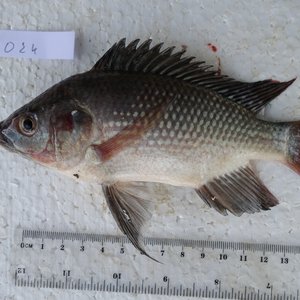A team of Japanese researchers led by the RIKEN Nishina Center for Accelerator-Based Science created larger-than-usual strains of rotifers by creating mutations with a heavy ion beam that could contribute to improving the survival rate and optimizing the growth of fish larvae in aquaculture.
Economically important fish species, such as bluefin tuna, yellowtail, flatfish and groupers, are fed live feeds until they are large enough to be fed with manufactured feeds. Rotifers are commonly used as first feeding, however, fish need progressively larger feed as they grow and rotifers are generally small and often not large enough to satisfy the growing fish, leading to cannibalism or growth abnormalities and eventually, lowering the survival rate. “We decided to try to do something to improve the survival rate of fish larvae, as this would help increase aquaculture productivity. We thought that if we could create a large rotifer strain using our expertise, it would contribute to stabilizing the income for aquafarmers,” said Tomoko Abe from RIKEN RNC.
Researchers used a technique known as heavy ion beam irradiation in an attempt to create larger rotifers. Heavy ion breeding is a technique where cells are exposed to a beam of heavy atomic nuclei, creating mutations much more effectively than natural processes such as UV light. By adjusting the type of ion and dose, the beam is used to induce random mutations in the genome, and strains with desirable phenotypes can be selected. The team has already succeeded in developing highly effective mutant lines of oil-producing microalgae, high-yielding rice and commercialized sake yeast, using similar techniques.
After irradiating proliferating rotifers, researchers selected larger individuals and cultured them for several generations to create a large mutant line. The bred rotifers were approximately 1.2 times larger than other strains, which researchers judged would be an ideal size for growing juvenile fish. They also found that some of the strains were not only larger but also grew more quickly than the parent strains.
“In general, larger mutants grow more slowly than normal rotifers, but we were lucky to discover a line that grows not only larger but faster as well,” Abe said. “However, picking a large mutant among live rotifers that are moving quickly around under a microscope was far more difficult than we had anticipated and was the hardest part of this study.”
“The enlarged rotifers obtained in this study could potentially provide a stable supply of larger rotifers at low cost, enhancing aquaculture,” researchers said. The group now plans to use the larger rotifers in field tests to see if they can demonstrate improved survival.
Download the study here.













